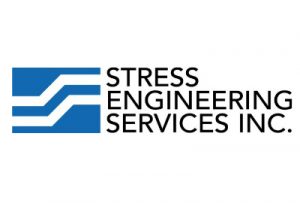
By Kenny Farrow, PhD, PEng, Stress Engineering Services Canada
Facilities pipeline inspections are an important part of overall preventive maintenance to verify the integrity of a pipeline system and reduce the risks of leaks, pressure surges, and corrosion. These inspections ensure the safety of all personnel and the environment during the transportation of products. If there are any issues with the pipelines, it can affect the flow of energy, lead to chemical spills, and stop production.
A Complete Approach to Ensure Piping System Integrity:

Stress Engineering Services Canada (SESC) offers an all-encompassing approach to piping system inspection and integrity. Our program comprises all necessary elements: a review of the design, a walkdown, analyses, inspections, evaluations, and documentation. The result is a complete inspection and assessment program for piping that maximizes life and minimizes risk to the owner operator. This approach is suitable for all facilities piping systems, including covered piping systems (CPS) such as main steam and hot reheat lines (systems with high consequences of failure).
Piping Failures Can Be Catastrophic:

Piping systems are designed to ensure that pipe stresses and displacements operate within adequate safety margins. Piping failures can be expensive and can also place personnel at risk. Our engineering and materials experts regularly analyze piping failures stemming from:
- Improper Hanger Operation (excessive deflection, broken hangers, improperly operating hangers)
- Fatigue (vibration-based and creep-based fatigue)
- Creep and Creep Rupture
- Flow-assisted Corrosion (FAC)
- Corrosion under insulation (CUI), typically at piping supports
A complete inspection and assessment of your piping can validate that the piping design is operating as intended and can be used to establish the system’s condition in terms of remaining life, fitness for service, require inspection intervals, and expected future performance.
Regulatory Requirements:
ASME B31.1 (Chapter VII – Operation and Maintenance) requires a power piping fitness-for-service (FFS) program for CPS. This code has been adopted by over 35 US states and Canadian provinces. In 2016, the National Board Inspection Code Committee (NBIC) approved a ballot requiring piping systems to also be in compliance with B31.3. Detailed recommendations on how to execute a proper piping system integrity program is provided in Appendix V.
The Approach:
Step 1: Collect & Review Design, Operating, Maintenance, and Inspection History
Step 2: System Walkdown and Design Verification
Step 3: As-Found Pipe Stress Analysis (FFS)
Step 4: Creep Stress Analysis
Step 5: Appropriate Inspections
Step 6: Assess Need to Recalculate Models
Step 7: Examine Local Concerns
Step 8: Documentation

Next Steps:
Codes recognize that inspections and assessments are crucial to the safe and reliable operation of piping systems and, in some instances, require a detailed program that at least includes systems exposed to creep. At Stress Engineering Service Canada, we are ready to assist you in performing walkdowns and evaluating fitness for service based on as-found conditions.
Contact kenny.farrow@stress.com or tom.raptis@stress.com
Share This:





 CDN NEWS |
CDN NEWS |  US NEWS
US NEWS 
































Borrowing More and More – Federal Budget Brings New Programs and Pains: Margareta Dovgal – Resource Works